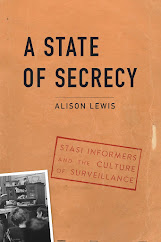312 AD is a year of horrific and brutal warfare. Constantine's northern army is a small force, plagued by religious rivalries, but seemingly unstoppable as they invade Maxentius' Italian heartlands. These relentless clashes, incidents of treachery and twists of fortune see Maxentius' armies driven back to Rome.
Constantine has his prize in sight, yet his army is diminished and on the verge of revolt. Maxentius meanwhile works to calm a restive and dissenting Roman populace. When the two forces clash in the Battle of the Milvian Bridge, there are factors at work beyond their control and soon they are left with carnage.
There is only one way Constantine and Maxentius' rivalry will end. With one on a bloodied sword and the other the sole ruler of Rome...
So, this latest follows on from the first two in the Rise of Emperors series in which two friends, now rivals, meet in the ultimate battle for Rome. As Edward Gibbon in his "The Decline & Fall of the Roman Empire" states: "... though the characters of Constantine and Maxentius had very little affinity with each other, their situation and interest were the same ...... " - and that interest was Rome.
Gibbon further waxes lyrical on the virtues of Constantine over the vices of Maxentius, writing that "... though Constantine might view the conduct of Maxentius with abhorrence, and the situation of the Romans with compassion, we have no reason to presume that he would have taken up arms to punish the one or to relieve the other ..."
History is written by the victors, and the accounts are heavily one-sided in favour of Constantine, and by 312 (when our story opens), Constantine and Maxentius were engaged in open hostility with one another, although they were brothers-in‑law through Constantine's marriage to Fausta, sister of Maxentius.
Many reasons are thrown about - Gibbon himself talks about some slight inflicted upon the statues of Constantine by Maxentius, whereupon: " ... Constantine no longer hesitated. He had deliberated with caution, he acted with vigour. He gave a private audience to the ambassadors who, in the name of the senate and people, conjured him to deliver Rome from a detested tyrant; and, without regarding the timid remonstrances of his council, he resolved to prevent the enemy, and to carry the war into the heart of Italy. ..."
And so it was that in the spring of 312, Constantine gathered an army and decided to oust Maxentius himself. He easily overran northern Italy, winning two major battles: the first near Turin, the second at Verona. Upon hearing the news of Constantine's approach, Maxentius chose to make his stand in front of the Milvian Bridge. Holding it was crucial if Maxentius was to keep his rival out of Rome. Here history is a little blurred - Maxentius had probably partially destroyed the bridge during his preparations for a siege for he had a wooden or pontoon bridge constructed to get his army across the river, which he would then use to cut off Constantine's advance should that prove necessary.
As the battle turned, Maxentius decided to order a retreat, intending to make another stand at Rome itself. However, there was only one escape route - the pontoon bridge. Constantine's men inflicted heavy losses on the retreating army. But we know the outcome of this battle - Constantine was the victor, whilst Maxentius was among the dead. The battle gave Constantine undisputed control of the western half of the Roman Empire.
Whilst the focus of this narrative is on that fateful year of 312, there is still plenty going on, and despite the known outcome, you still can't help but hope that the underdog will triumph.
Neither man is hero or villain. Unlike the sources from this period, which reflect the propaganda of Constantine and present Maxentius as a brutal tyrant, authors Turney & Doherty provide a carefully constructed, and fluid narrative from the viewpoint of both.
And as the reader progresses through the alternating narrative, you soon realise that both men share more in common than one would expect - both are beset by fractious factions within their support networks; both look to signs, omens and prophecies; both are surrounded by traitors, dissemblers and deceivers, religious discontents, and angry wives.
The authors' notes at the end provide a neat wrap up to this well researched and written series.
read more here:
Edward Gibbon: Chapter 14 - The History of the Decline and Fall of the Roman Empire
Eusebius of Caesarea - Vita Constantine

























